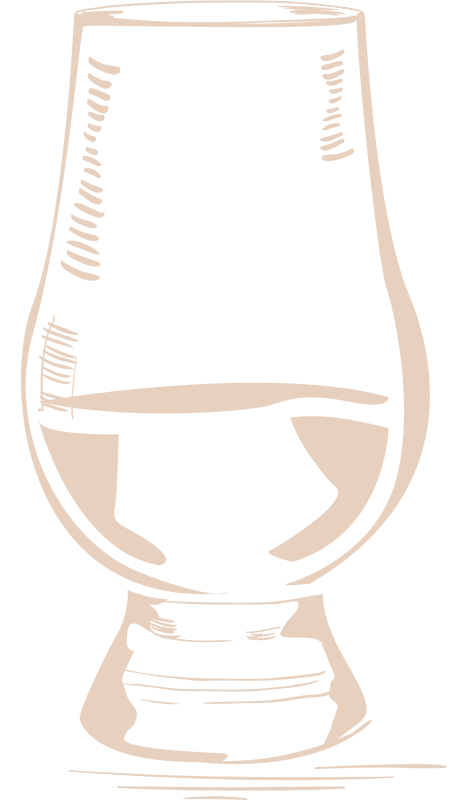7 Fun Facts about Canadian Whisky
I
The history of whisky-making in Canada can be traced back to 1769, when the first distillery was built in Quebec City. John Molson, the founder of Molson Brewery, can be adjudged the Father of Canadian Whisky. He purchased a copper pot still once used to make rum, and in 1801, he began the first commercial-scale production of whisky in Canada. (Canadian Whisky History)
II
In 1924, during the Prohibition Period in the United States, two-thirds of the whisky imported to the US came across from Canada, according to the US Coast Guard. This accounted for approximately $40 million worth of liquor. The infamous Al Capone was one of the most well-known suppliers. (The History of Canadian Whisky)
III
Under Canada’s Food and Drug Acts, to label a product as “Canadian whisky”, the whisky must be mashed, distilled and aged in Canada in small wood vessels for not less than three years. It also should not contain less than 40 per cent alcohol by volume.
IV
Traditionally, most Canadian whisky is blended. Whether it’s corn, barley, wheat, or rye, each grain is distilled on its own (unlike American bourbon). Then, the resulting liquors are blended in various ways. However, a micro distillery boom is keeping up with new and innovative trends in the whisky world and making waves (like us!).
V
Canada was the first country to legislate an age requirement for whisky in 1887. It required a one-year minimum aging period year in wood to be referred to as In 1890, it became no less than two years. Scotland didn’t enact its aging law until 1916. Today Canadian Whisky must be aged for a minimum aging period of three years in wood to be called Canadian Whisky. (Canadian Whisky History)
VI
Canadian whisky is among the most fascinating liquors on the market. It is one of four recognizable global whisky styles. In all, more than 17.5 million 9-litre cases are sold annually in 160-plus countries, and it is the second best-selling whisky in America. (Canadian Whisky in Three Periods) Seventy per cent of Canadian whisky is exported to the US.
VII
There is a micro distilling movement happening in Canada, having started about a decade ago. Among Canada’s 250+ micro distilleries, at least 75 now have whisky in bottles or barrels. Canada’s micro distilling industry is just a decade old, and already, at least a dozen new distilleries promise to nudge Canadian whisky towards its big flavourful past. (Canadian Whisky in Three Periods)
How to Enjoy
Whisky drinking is a magical experience as whisky is a world of diversity. There are several ways to enjoy whisky: neat, chill or stirred it into a cocktail.
Before you add anything else to the whisky, sample a little of it in its pure state.
Whisky should be served at room temperature, between 18° and 22°C (64° and 72°F). This will give you a better idea of the whisky’s flavour and aroma and help you decide whether or not you want to mix it with anything.
After experiencing the drink’s natural aroma and you really want a chilled whisky, for the best result, add a large ice cube (1.5in to 2 in) or ice ball or use chilled whisky stones to avoid dilution.
Here are five simple steps to help you to discover your unique tastes and choose your preferences.
I
Select the Proper Glassware
Using a tulip-shaped whisky glass with a stubby stem is recommended to allow you to swirl and smell the whisky. This shape can enhance the smell of the whisky since the narrow opening helps trap and concentrate the vapours at the top of the glass.
For serious tasting, you need a stemmed glass to avoid heating the glass contents with your hand and distance the whisky from any disturbing odours from the skin.

II
Examine with your eyes
Your first sense to be stimulated will be your sight. Hold the glass up to the light or over a piece of white paper to find out:
The colour: Admire the colour the wood has given the whisky. Make it approachable by relating it to what you know. Usually, the darker the colour, the more concentrated the flavour. Also, read the label or research if your selected bottle has no colouring agent (caramel E 150) been used.
The clarity: This opacity has no bearing on the quality of the whisky. It is not a defect but rather is because certain compounds are soluble only above 46% ABV. If the whisky has not been chill-filtered and has less than 46% ABV, it will tend to become cloudy below a specific temperature or when you add water to it.
Chill-filtration gives clarity, but it affects the aromatic profile of the whisky.
The viscosity: Swirl your glass gently to observe the streaks/ legs/tears of liquid that run down the inside of the glass. The streaks of a whisky tell you the alcohol content and the texture of the spirit. The higher the alcohol content, the more legs there will be. Slow-moving legs indicate more texture. In addition, the longer the whisky was aged in a cask, the more they will tend to separate and space out.
Once you have observed the whisky, stand the glass upright again and wait for a few minutes to allow the aromas to become concentrated.
III
Smell with your nose
Smell the whisky two or three times before tasting it. Smell it gently, with your mouth slightly open to enhance both your sense of smell and sense of taste and savour all that gorgeous caramel, fruit or smoke. The smell of alcohol may be overpowering on the first sniff. Then you may start to notice other notes, like spices and wood.
There’s no right or wrong – everything you smell comes from life experience, and often the same scent will prompt wildly different associations from one person to the next.
IV
Taste with your tongue
Tasting whisky is often about the aftertaste or the “finish.” After you swallow or spit the whisky, the flavour should linger on your palate, evolve and then fade away.
Take a good sip of your whisky. Roll the whisky around in your mouth before swallowing. After you swallow, wait for a moment before taking another sip so that you can appreciate the aftertaste.
It’s an acquired taste, so it takes time to truly appreciate the complex flavors and aroma of whisky. The first sip may taste overwhelmingly like alcohol, but you will probably begin to notice other flavours on your second or third taste.
Try a couple of drops of water to see how that unlocks different aromas and flavours. Water opens up a whisky and helps you identify the hidden aromas more easily.
V
Enjoy
Whisky is all about enjoyment. Drink it the way you like it. Don’t let anyone tell you that you are wrong. Enjoying whisky starts with tasting: it’s evaluating and understanding to appreciate the whisky better. It is also a journey to discover your personal preferences in the whisky world.

